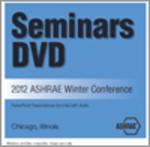Multi-story buildings in Denmark from 1850–1950 are built with masonry walls and wooden floor beams. Large energy
savings can be achieved by insulating the facades. Often interior insulation is the only possibility in order to keep the appearance
of the external facade. The internal insulation reduces the drying potential of the wall, which might lead to moisture problems
in the beam ends embedded in the masonry due to absorption of driving rain.
This paper describes a solution to avoid the moisture problems and still achieve large energy savings. The thermal analyses
are made in thermal simulation programs for two dimensions and three dimensions. The moisture analyses are made by a twodimensional
simulation of the coupled heat, air, and moisture transport.
The results show that leaving an uninsulated part of the wall above and below the floor division could solve the moisture
problem depending on the amount of wind-driven rain hitting the facade. The proposed solution would almost halve the heat loss
through a typical wall section compared to the original wall structure.
Citation: Thermal Performance, International Conference, 2010
Product Details
- Published:
- 2010
- File Size:
- 1 file , 1.9 MB
- Product Code(s):
- D-BuildingsXI-89


